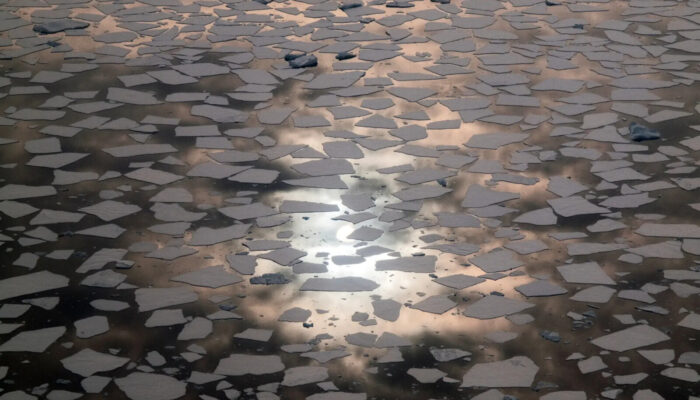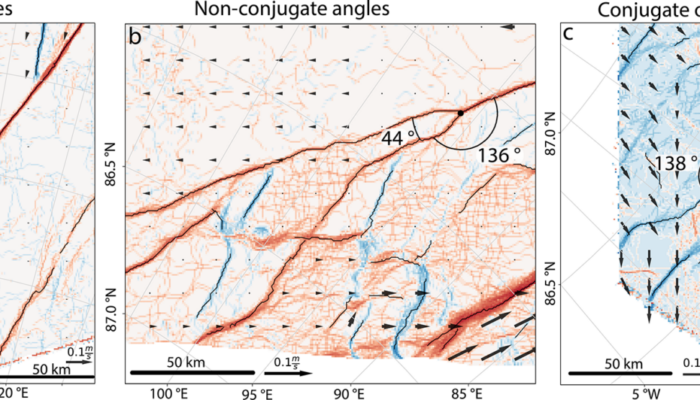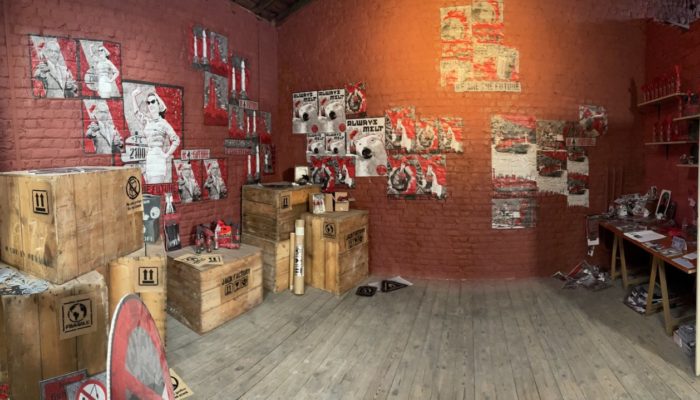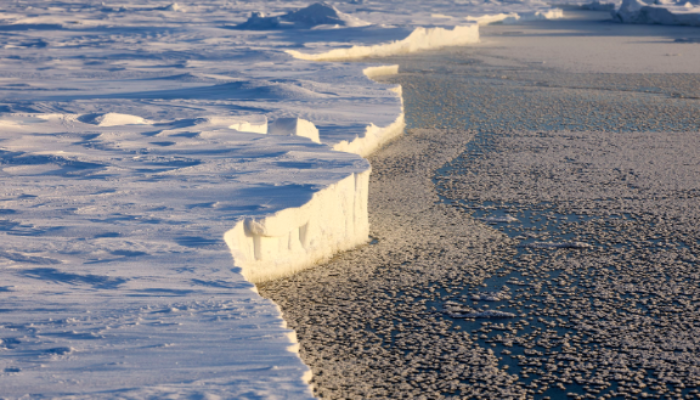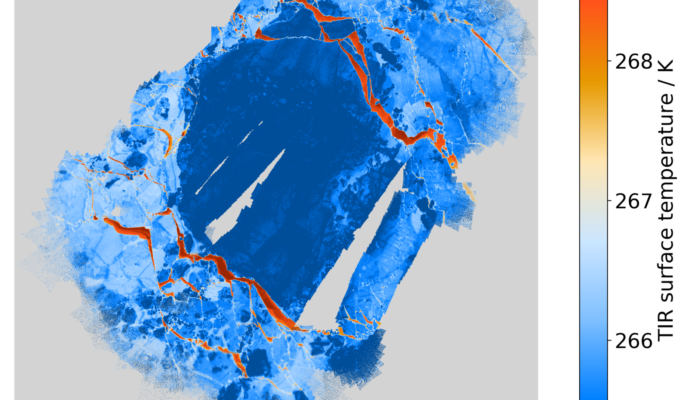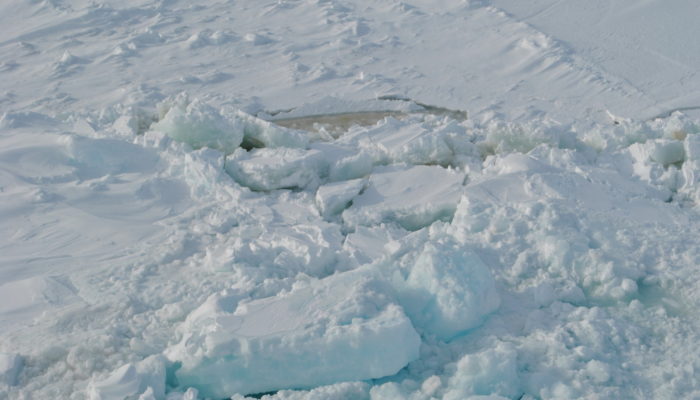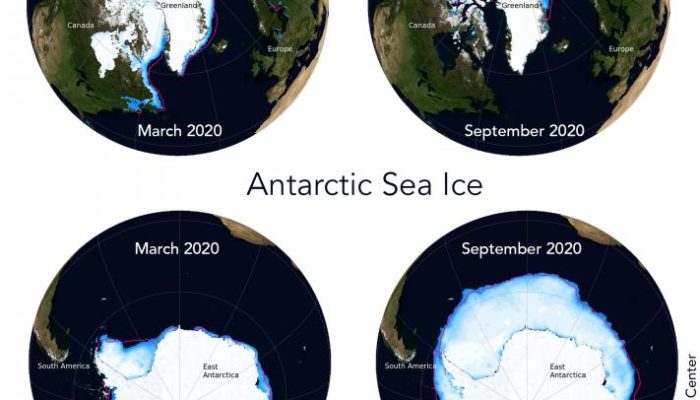On this September 13th, coinciding to be a “Friday 13th”, we wanted to scan the cryo-history for expeditions started, sunken ships that day, and mountain myths. And we did find that. But as autumn approaches in the Northern hemisphere, the spookiest story of all was this one: the unlucky timing of the Arctic sea ice in September. TGIF – but not for sea ice Although the median min ...[Read More]
If you didn't find what you was looking for try searching again.
Cryospheric Sciences
A journey to the Edge of the Ice: Discovering How the Ocean Meets the Polar Sea Ice
Let’s continue the journey of discovering cool facts about sea ice which started with breaking the ice. This time, we’re diving into a fascinating part of the Arctic and Antarctic: the Marginal Ice Zone (MIZ). Imagine a place where the vast, frozen world of sea ice meets the moving waters of the ocean underneath. This is the MIZ, a unique area where air, water, and ice mix and mingle. ItR ...[Read More]
Cryospheric Sciences
An exceptional year: What’s up with Antarctic sea ice?
In our blog, we have written a lot about Arctic sea ice (see this post, this post and this post for recent examples). Much less has been written about Antarctic sea ice, i.e. its southern counterpart. That is not surprising as Arctic sea ice has experienced major losses since the late 1970s (beginning of satellite observations), while not much had happened to Antarctic sea ice (despite a small exp ...[Read More]
Cryospheric Sciences
Highlighted Paper: Breaking the ice – what’s new in modeling sea ice deformation
Most of the time when we speak or read about sea ice it is probably about its extent or thickness or the decline in both, or maybe even about the microorganisms living inside and underneath it. How sea ice breaks and deforms is normally not so much the topic of general discussions. This is actually a really important process that we do not know enough about, at the same time it is pretty co ...[Read More]
Cryospheric Sciences
How over-consumption leads to reduced sea ice: Visualization through artwork
Do you think that it is sometimes challenging to understand science (as a reader or listener) or to explain it (as a scientist)? Then, art may be a good solution to the problem. Between April and June 2023, Zacharie Bodson (artist) and I (climate scientist) are participating in the Seas and Oceans exhibition to explain the links between changes in Arctic sea ice and over-consumption. Read here abo ...[Read More]
Cryospheric Sciences
Did you know that cracks play a large role in the Arctic sea ice production?
What do you need to form sea ice? Well, you can start with some sea water, an ocean will do, and cold air above it. Once a layer of ice starts forming, break it to make some cracks. You would have not thought of that? Yet, our recent study suggests cracks in the ice contribute significantly to Arctic winter sea ice production. A relationship between sea ice formation and breakup? We have known for ...[Read More]
Cryospheric Sciences
Did you know about the dark secrets of Arctic sea ice?
Have you ever wondered what dark secrets the Arctic sea ice holds during the harsh winter months? Imagine total darkness in the central Arctic, making it almost impossible to gather scientific information. At this time of the year, usually only satellite observations are available. This changed in September 2019 when a team of scientists collected in situ and airborne data in the central Arctic as ...[Read More]
Cryospheric Sciences
For Dummies: How Arctic sea ice and the AMOC interact
In this post, I will talk about two famous characters of the climate system; I will define them and see how they have changed in the current context of climate change. I will also show you how these two characters interact, one influencing the other, and vice versa. Finally, let’s see how the future looks like for them and the consequences for the global climate. I hope you will enjoy this story. ...[Read More]
Cryospheric Sciences
Highlighted Paper – Welcome to the microbial BBQ in Arctic Sea ice
There, what is this, spoke the sea ice algae. Is this the first light of dawn? Is it finally this time of the year again? Spring…the best time of the year…the BBQ season? And in the little brine pockets all around the sea ice, the bacterial and archaeal community stirred alive. BBQ? Did somebody mention BBQ? Let’s have some vegan burgers! And so spring began inside of the Arctic sea ic ...[Read More]
Cryospheric Sciences
Did you know the differences between Arctic and Antarctic sea ice?
If you look at the maps in Figure 1, you will quickly see that sea ice is present in both polar regions (Arctic at the top, Antarctic at the bottom). Despite this apparent similarity, some differences exist between Arctic (in the Northern Hemisphere) and Antarctic (in the Southern Hemisphere) sea ice. We provide a brief explanation of two key differences in this post. Geography The first main diff ...[Read More]

